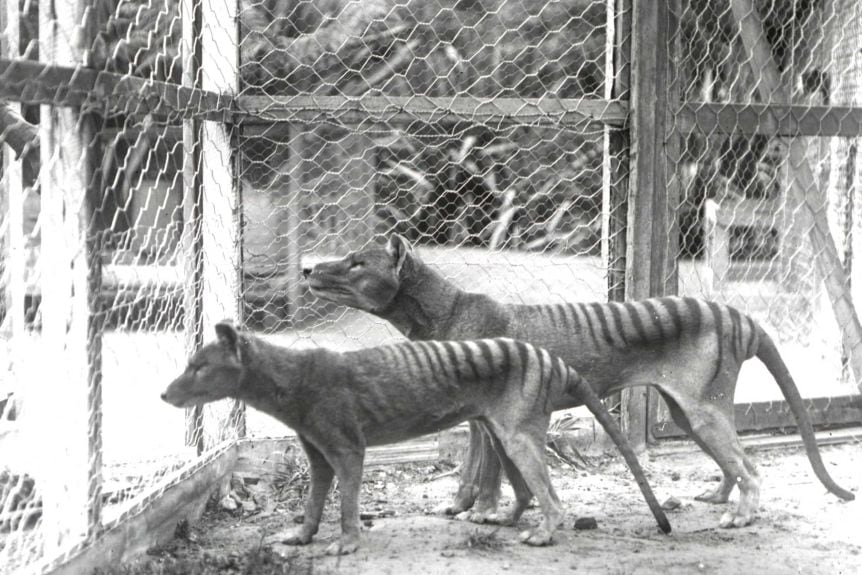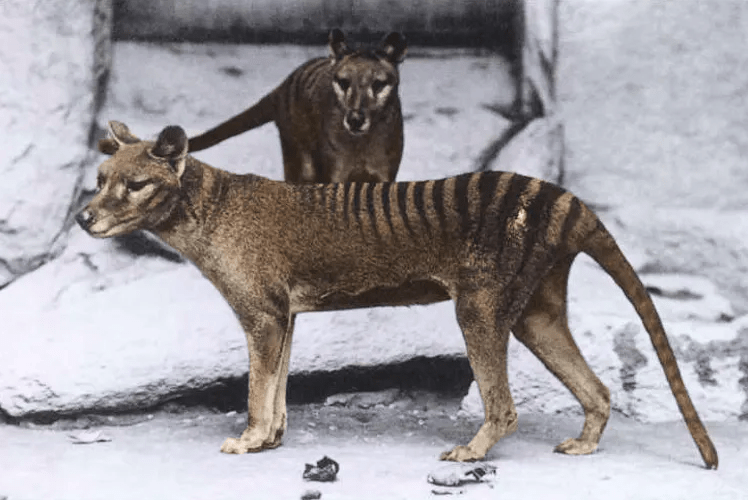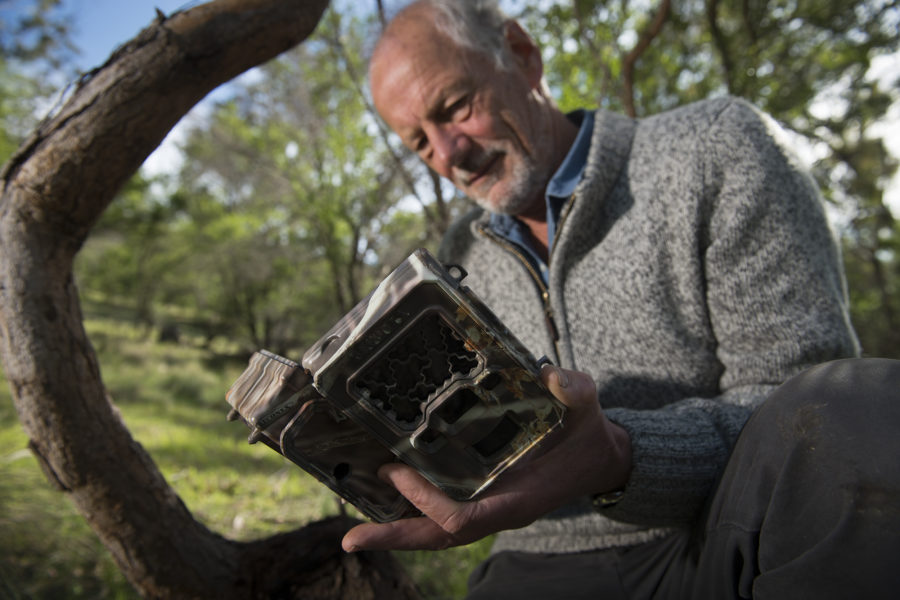Doggone it: Tassie tiger skull most similar to wolves, not other Aussie marsupials

Tasmanian tigers and dogs last shared a common ancestor 160 million years ago, but new research has revealed the thylacine resembled its distant relative from birth.
Scientists from the University of Melbourne and Flinders University used micro-CT scanning and digital reconstructions to compare the skulls of Tasmanian tiger pups and wolf pups.
“The Tasmanian tiger in particular really captivated us, because it had a pouch, it was a marsupial, but it evolved to be very dog-like,” lead author Dr Axel Newton said.
“We expected that they would start to become more similar as they got older, because these are two very distantly related species.
“They last had a common ancestor 160 million years ago, so this was back when dinosaurs were still around, and they’ve subsequently evolved very independently of one another.
“However, surprisingly we found that [their skulls] were very similar at birth.”

Tasmanian tigers have been extinct since the last animal died in captivity at Hobart’s Beaumaris Zoo in 1936.
The thylacine was a marsupial and gave birth to its young at a very early stage with the jelly bean-sized newborn crawling into its mother’s pouch to continue developing.
This led researchers to assume baby Tasmanian tigers’ skulls would look more similar to other marsupials like Tasmanian devils, possums and kangaroos rather than wolves or dogs.

“They actually start to look like a dog right back from when they’re in the pouch, and they actually start to develop very much along the same ways that a puppy would develop, and that was something that was very, very surprising to us,” Professor Andrew Pask from the University of Melbourne said.
“Understanding how a marsupial progresses to looking exactly like a wolf is something I think is incredibly interesting.
“It tells us a lot more about the biology of these amazing marsupials, but also helps us to understand more generally how mammals develop and get all different sorts of skull shapes.”
Micro-CT scanning prevents damage to precious thylacine specimens
The research used thylacine specimens loaned from the Tasmanian Museum and Art Gallery and Museums Victoria, and wolf skulls from the Museum of the North in Alaska.

Professor Pask said it was vital the thylacine specimens were not damaged during the research.
“There’s a very limited number of those preserved pup specimens and they’re incredibly precious obviously because we’re unlikely to ever have any again.”
Micro-CT scanning allowed microscopic X-rays to penetrate the tiny thylacine pup specimens and then create a high-resolution 3D image of what was inside.
Associate Professor Vera Weisbecker from Flinders University said in the past it was necessary to damage a specimen to uncover the bone structure of tiny marsupials.
“Without CT scanning, virtually none of the specimens we used in this study would have been available at all for research. We would not have been able to find out anything about this,” she said
“The beauty of this micro-CT scanning is it’s completely non-invasive to the sample … we can use this technique to really look inside and take every measurement we need to of their developing skulls without having to do anything that’s going to damage or compromise that specimen in any way.”

Scientists hope research will help save other species from Tasmanian tiger’s fate
The thylacine’s extinction made the discoveries bittersweet for the researchers, who wished they could observe the marsupials in the wild.
“Being able to resurrect [the thylacine’s] behaviour in this way is good but it’s also really poignant because Australia doesn’t have a great track record when it comes to mammal extinctions,” Dr Weisbecker said.
“We are losing species under our nose as we speak and it’s really sad that we have to go about it this way rather than just going into the wild and using a few camera traps or just observing this animal.”

Dr Newton said he hoped the findings would help inform conservation efforts for relatives of the thylacine, like Tasmanian devils which are themselves threatened with extinction.
“We’ve learned more about [thylacines] after their extinction than was known about them when they were alive,” he said.
“I feel we have a responsibility to do the species justice because it was hunted to extinction by humans.
“By us understanding more about it, it gives us a better understanding of the natural diversity that we have at the moment.”
The research has been published in the journal Communications Biology.



